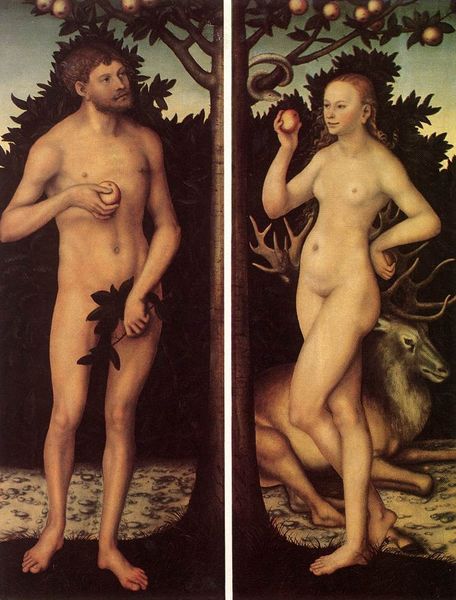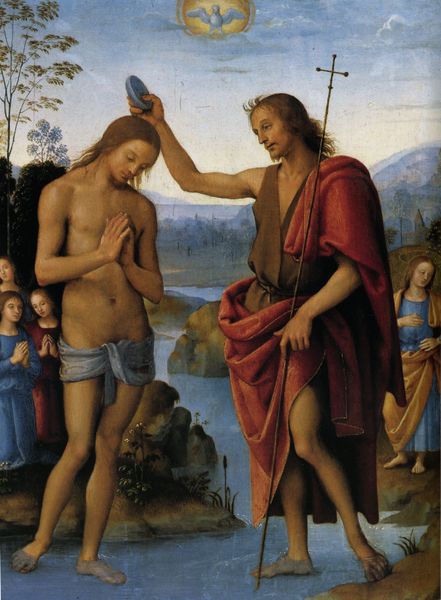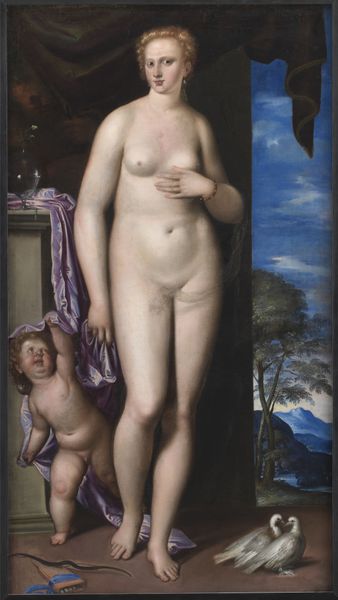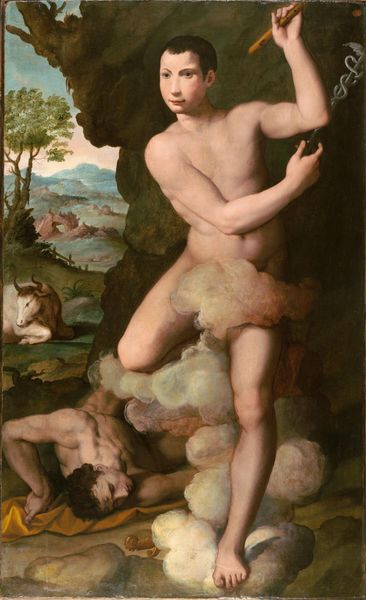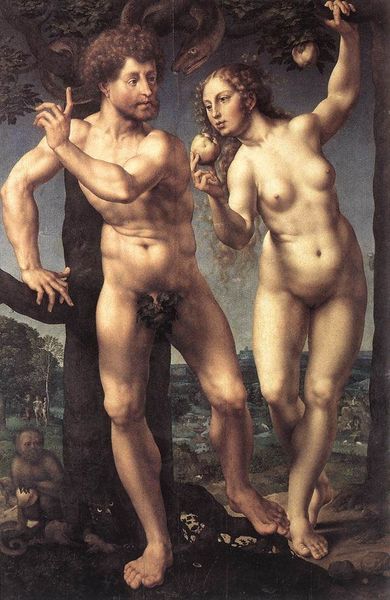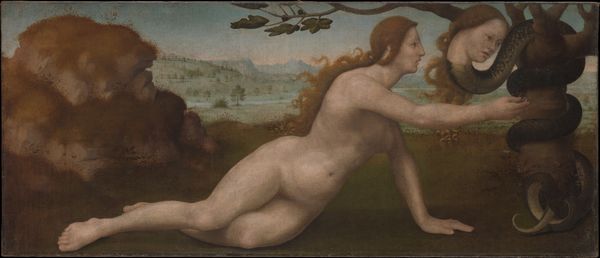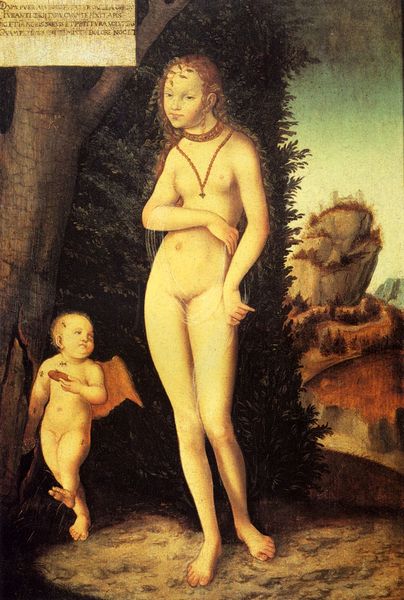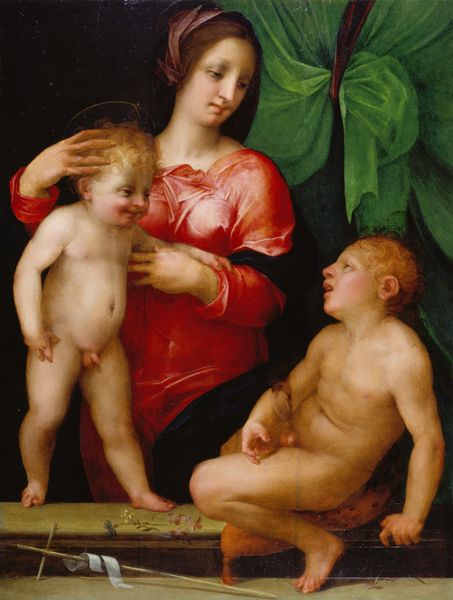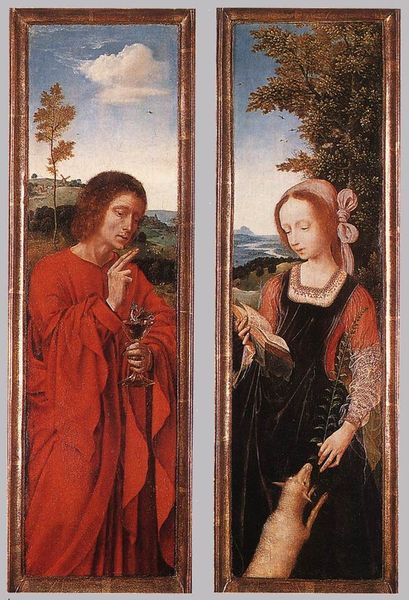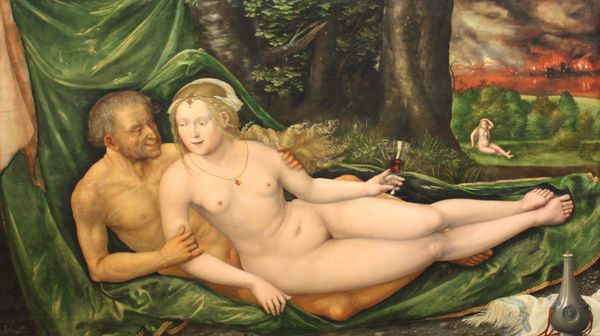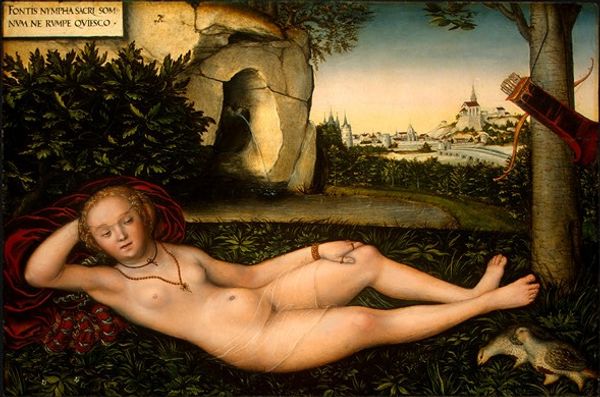
oil-paint
#
portrait
#
allegory
#
oil-paint
#
figuration
#
11_renaissance
#
oil painting
#
christianity
#
history-painting
#
northern-renaissance
#
surrealist
#
nude
Dimensions: 65.5 x 37 cm
Copyright: Public domain
Editor: So, this is Mabuse’s "Adam and Eve" from 1510, currently housed at the Thyssen-Bornemisza Museum. Painted in oil, it's a rather straightforward depiction of the biblical scene, yet I find the figures somewhat… reserved, even hesitant. What’s your take on it? Curator: Hesitancy is a good observation. Think about what was happening institutionally. Religious imagery was under intense scrutiny. How do you depict nudity, temptation, and original sin during a period of both religious fervor and the rise of humanism without inciting controversy or censorship? Mabuse is navigating very complex waters. Editor: So, it’s almost like he's trying to play it safe? Make a statement, but not too loudly? Curator: Exactly. Consider also the political climate of the time. Monarchs and powerful families were patrons of the arts. This wasn’t art for art’s sake; it was deeply enmeshed in networks of power and influence. Adam and Eve could also be seen as an allegory for the perfect subjects, and what happens when you don't adhere to god's will (aka Monarch's will). What does the stylization of the bodies tell you? Editor: Well, they look… idealized, but also kind of awkward. Adam's got that classical contrapposto thing going on, but his proportions feel a little off, as though the point isn't about real anatomy. They seem caught between realism and symbolism. Curator: Precisely. And it’s that very tension that speaks volumes about the era. How do you reconcile classical ideals, religious doctrine, and emerging scientific understanding in one image meant for public, and more importantly, elite consumption? Mabuse's Adam and Eve reveal the visual gymnastics artists had to perform within restrictive social and political frameworks. Editor: I never thought about it that way! It makes me look at it from a completely new perspective, it gives this "awkwardness" so much meaning. Thanks! Curator: My pleasure. It’s a great example of how art serves not just aesthetic but ideological purposes too, especially within the right context.
Comments
No comments
Be the first to comment and join the conversation on the ultimate creative platform.

